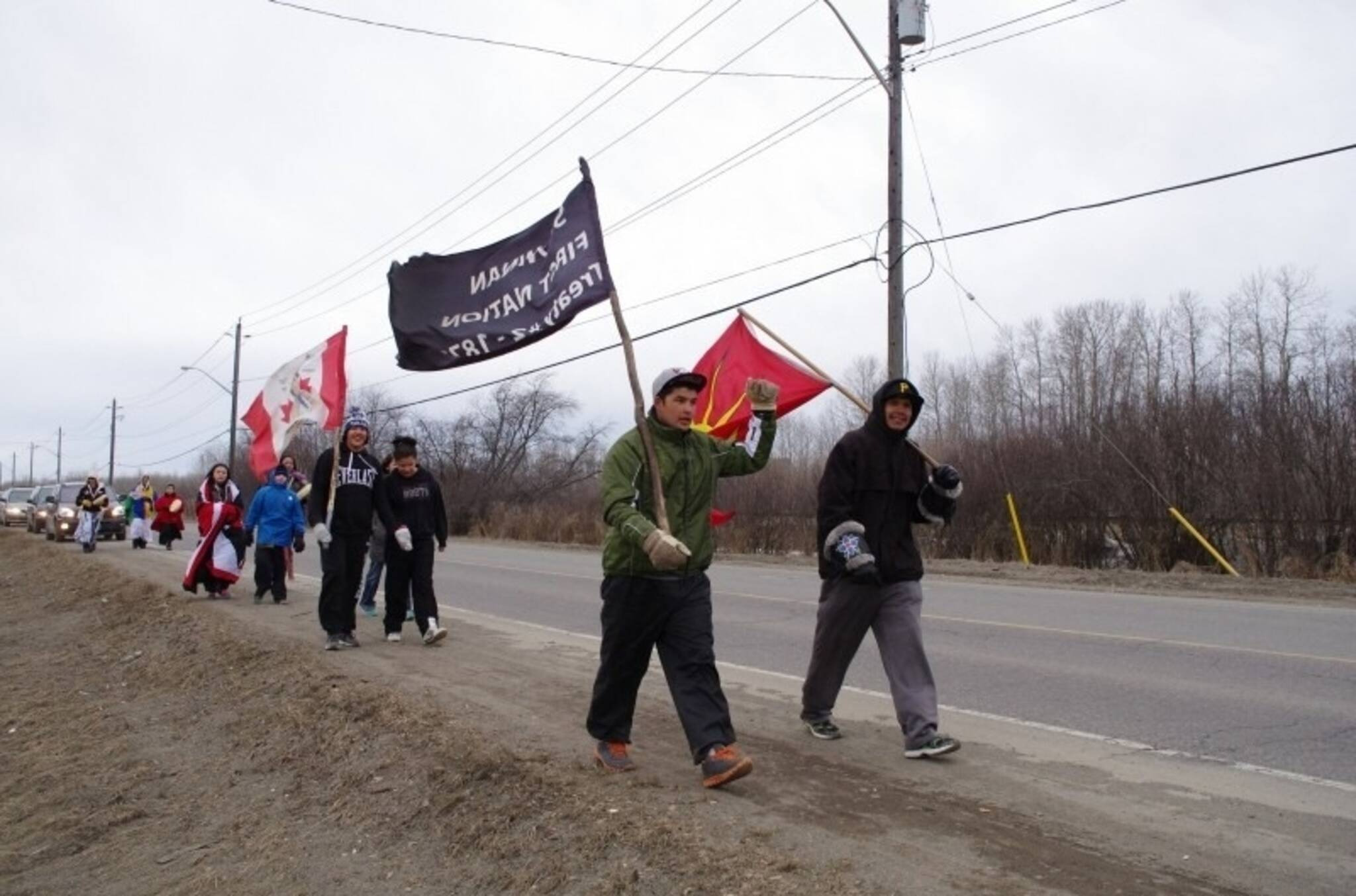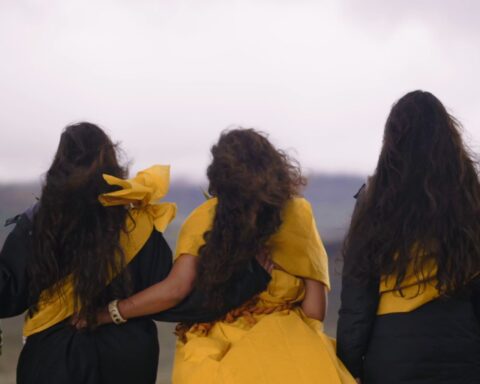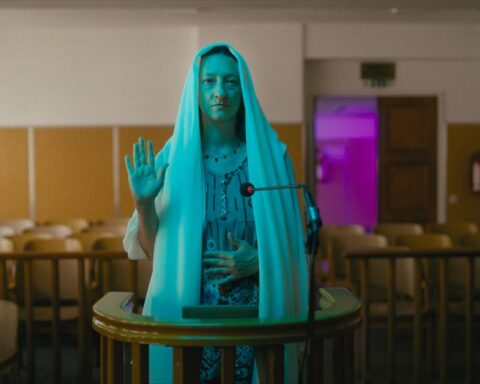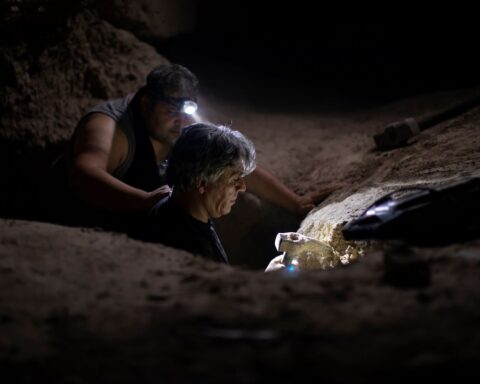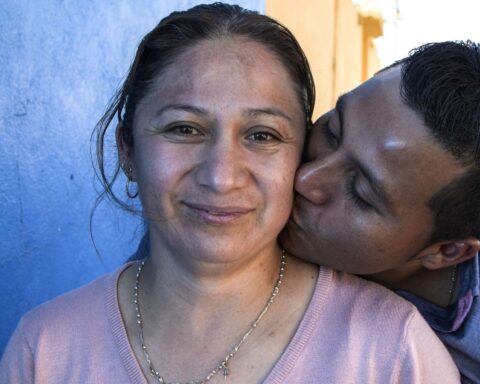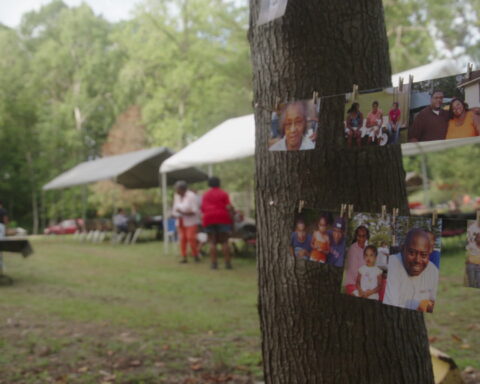Tell me about yourself,” says an off-screen Alanis Obomsawin to Randy Horne, the subject of her short documentary Spudwrench: Kahnawake Man (1997). This type of inquiry is, of course, essential to any documentary practice—it’s the kind of curiosity that inspires filmmakers to engage with, and ultimately represent, worlds outside of their own. But in the work of Obomsawin, such probing into the personal takes on a greater meaning.
Since she began working with the National Film Board (NFB) in 1967, Obomsawin has not only made more than 20 short and feature length documentaries about First Nations peoples, but has also made it her mission to fight for their rights in Canada. As her latest film, which will have its international premiere at the 2014 Toronto International Film Festival, Trick or Treaty?, proves, her work is not done: Aboriginal rights north of the 49th parallel and around the world remain at best unresolved, at worst, frequently abused. This has meant turning her camera on marginalized people and communities, and asking them to talk about their lives. Simple, perhaps, but as her body of work proves, also revolutionary.
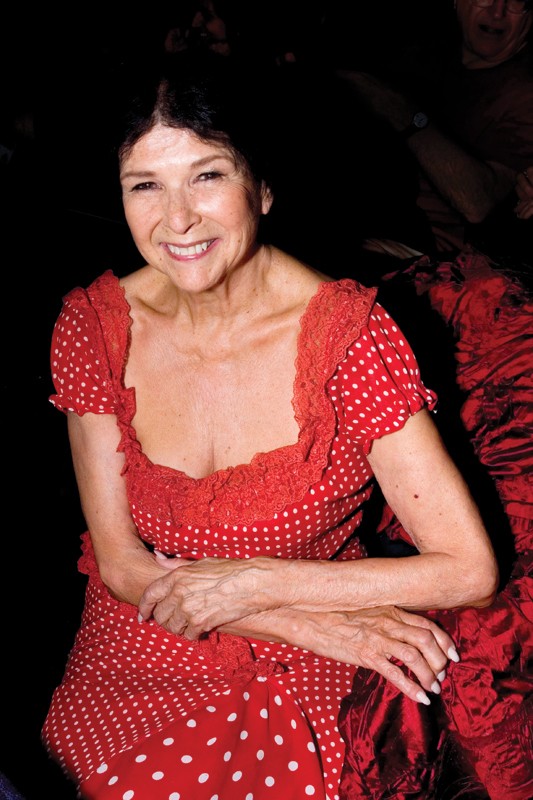
Obomsawin’s creative career began as an oral storyteller. Born in 1932 in Lebanon, New Hampshire, she grew up in Quebec as a member of the Abenaki Nation on the Odanak reserve and then in Trois-Rivières. By the age of 16, she had become recognized as an accomplished singer and was performing in folk festivals and classrooms across Canada. Looking back now, she calls this period “a great learning time,” as through touring she saw first-hand the socio-economic disparities that existed between white Canadians and Indigenous peoples. Through her work in classrooms on and off reserves, Obomsawin further observed the power of pedagogy as a tool of colonization. “I feel that the teaching of the history of Canada was designed to propagate hate towards our people,” she says over the phone from Montreal. “It was necessary for us to take control.” And for Obomsawin documentaries were the answer: “Film is the only way I could take a stand and get the children to learn something about themselves other than what we were taught in the classroom—that’s how it started.”
In many ways, Obomsawin represents a different—arguably nearly defunct—form of Canadian filmmaker. She has built her 40-year-plus career at the National Film Board, which has developed, funded and distributed the vast majority of her films. In today’s precarious film production landscape, such a long-term partnership seems utterly unimaginable—these days, emerging filmmakers are more likely to see their features get crowd-funded than Crown-funded. Plus, there was the risk that such deep ties to the NFB might have resulted in a stymied creative output or a shackling of subject matter, given the projects were (and still are) government-funded. But in the case of Obomsawin, her life-long dedication to education has made her relationship with the NFB a perfect fit—and, importantly, one that she has had an active voice in shaping.
Obomsawin came to the attention of the NFB not for her work behind the camera, but in front it. In the mid-1960s, she began a campaign to build a pool for youths in her own community after they were excluded from swimming at one in the neighbouring town. (Obomsawin remembers whites telling kids from the reserve, “No savages here.”) Her efforts caught the eye of director Ron Kelly, who made a film for CBC’s Telescope about her activism and work as a singer. After the doc aired, NFB producers Wolf Koenig and Bob Verrall invited Obomsawin to the Board’s studios.
Obomsawin was brought into a small screening room, seated on a stage and asked to “tell stories like you do in the classroom.” (Her roots as a storyteller become evident as she recalls this and other decades-old tales as if they happened mere days ago.) The producers were won over by her eloquence and vitality, two traits she exudes to this day, and she was asked to consult on a film set on a reserve near Regina. She agreed, but this project didn’t turn out to be the collaborative effort she was hoping for: “I quickly realized I was just being used to enter the community,” she says. Already keenly aware of the power of film as a tool of representation, she knew this wasn’t right. As she explains: “If the film came out and the community didn’t like it, they would blame me.” So, she made a decision that is emblematic of her steadfast determination to this day: “I did this once, but I never would do it again.” But of course, she also wasn’t about to give up.
This experience of being a mere “token Indian” drove Obomsawin to create her own works on her own terms and that centred on her own interests: indigenous culture and education. At the time, the NFB had a programme called Multi Media, which created docs to be used in classroom settings. “I got very excited over this,” Obomsawin recalls, and she began working with filmstrips and eventually 16mm to create and share First Nations stories with school kids. “Students were going to hear the voices of people from various Nations talking about their history, their games,” she recollects; decades on, the pedagogical power of this fact still clearly excites her. Despite the challenges of working in three languages and in an unfamiliar medium, Obomsawin quickly found her footing and soon after made her first NFB project, Christmas At Moose Factory (1971). (While this was shot in the late 1960s, it took a few more years of cajoling the NFB for funding to finally get the project finished.)
In this short doc, she interviewed children from the small Cree village on James Bay, coupling their stories with their hand-drawn pictures. Far from being a sentimentalized portrait of kids saying the darndest things, Christmas at Moose Factory is filled with poignant observations that when woven together create a sense of the daily and inner lives of the youth living in Moose Factory. Indeed, Obomsawin’s first film still represents how she approaches doc-making: giving a platform to marginalized, often dismissed voices.
In 1977, she made her first feature, Mother of Many Children (another project that proved difficult to fund), and continued to document First Nations issues on film throughout the 1980s. But it was Kanehsatake: 270 Years of Resistance (1993) that brought her to wider attention. Winning the Best Canadian Feature Film Award at TIFF, 270 Years of Resistance cemented Obomsawin’s reputation of blending documentary filmmaking and political activism. Shot over the period of 78 days, Obomsawin’s film chronicles the 1990 military siege of Oka (or as the media dubbed it, the “Oka Crisis”), where Mohawk warriors, with whom Obomsawin was encamped, came head-to-head with the Canadian military. Re-watching Kanehsatake two decades later, I found the warriors’ frustration and righteous anger to be palpable still. This is largely due to the fact that while Obomsawin’s work is observational in style, her documentaries are steeped in a First Nations point of view. Indeed, this, as Jerry White wrote in Cine Action, is the cornerstone of Obomsawin’s documentary work: She “assert[s] a very specific cultural identity rather than hi[ding] behind a faceless false objectivity.”
The critical acclaim that Kanehsatake earned brought further attention to Obomsawin, and it also launched a highly productive period for the filmmaker. Having shot 250 hours of 16mm footage, Obomsawin drew from what was left on the cutting-room floor to create two of her most powerful works: Spudwrench and My Name is Kanentiiosta (1995). In these portrait docs, Obomsawin returns to two of the central subjects in 270 Years of Resistance, Horne and Kanentiiosta, respectively, to see how Oka continued to affect their lives. By any other director, these films might have come off as mere behind-the-scenes DVD extras, but with both shorts the return only emphasizes Obomsawin’s investment in the communities she profiles. Those who cross her camera’s lens are never just objects in a documentary; they are people. This becomes all the more powerful given the subject matter at hand. As Kanentiiosta says while discussing the media’s coverage of the Oka uprising: “Killing a few Indians won’t make the news.” In this context, Spudwrench and My Name is Kanentiiosta speak to Obomsawin’s aim of changing public perceptions of First Nations peoples through interaction. Put another way: It’s easy to dismiss a person in the abstract, but in a face-to-face encounter one cannot deny their humanity. In each of her films, Obomsawin creates such conditions of humanistic proximity.
This type of rapprochement is also the intent of her latest film, Trick or Treaty? (In her own words: “People say ‘When are the Indians going to shut up?’ When they learn the real story, they’ll feel differently about their neighbours on reserves.”) Following the Idle No More movement and 16-year-old David Kawapit’s 1,600-kilometre walk to the Canadian Parliament in solidarity with Chief Teresa Spence’s hunger strike in 2012, Trick or Treaty? traces the very real and present-day implications of the James Bay Treaty, or Treaty Number 9. Signed in 1905, Crees and Ojibways from Ontario and Manitoba entered into an agreement with the British Crown and the Canadian government regarding land ownership and rights to resources. But as history has demonstrated, the legalities of the treaty were not observed, mainly due to misunderstandings (or outright deceit on the part of the British) and discrepancies between the written document and what was communicated verbally to the First Nations chiefs.
While many of Obomsawin’s works point to the role of history, here it feels the most pressing, as the film traces the current-day implications of the over 100-year-old document. “People laugh and say the treaty doesn’t exist anymore; that’s wrong,” says Obomsawin. In fact, she sees Treaty Number 9 as a crucial part of contemporary Canadian and First Nations history: “All my films have a continuity: We’re still talking about the treaty.”
As always, with this film Obomsawin’s aim is to educate and have as many people as possible see the film. She points out, “It’s not just our people; all people should learn what the treaty was supposed to mean.” And that’s why she says she was so happy to have the film selected to premiere at TIFF, especially the year after her last documentary, Hi-Ho Mistahey! (2013). “It was a wonderful surprise,” she says with genuine delight, “since I didn’t think they would take this film as I was there last year.” When asked if she thinks being programmed two years in a row speaks to her status as a filmmaker, she quickly dismisses the point: “I never think like that. My mind is always on how these films can be seen, how I can shift attitudes on our people, and how great it is for the people in the film to be recognized and treated with dignity. This is what is important to me.”
As for what’s next, Obomsawin is currently working on three projects. One centres on the rights of First Nations children, but she can’t yet speak about the other two. It’s an ambitious schedule, but her energy seems limitless: “I’m 81 years old; I’ll be 82 next month. I feel like I witnessed so many incredible changes, so much history. I want, as much as I know and more, to transfer this to the people. That’s what it’s all about.” The octogenarian’s outlook is inspiring, but more importantly recalls something First Nations activist Clayton Cheechoo says in Trick or Treaty?: “If you don’t speak and give it life, the story stops.” Through her work, Obomsawin is ensuring the story won’t be stopping any time soon.




